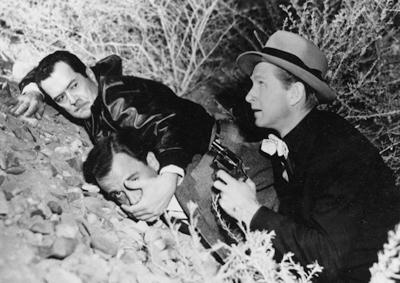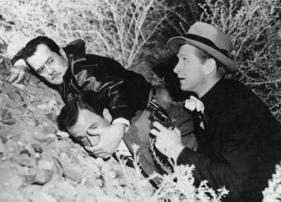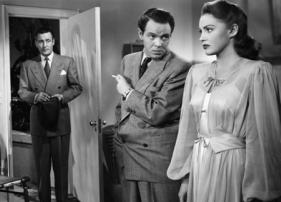"..one of the most emotionally devastating film noirs you will have ever seen" - Eddie Muller
Directed by Cyril Endfield
In 1947, novelist and B-movie screenwriter Jo Pagano published his third novel titled The Condemned. The novel was based upon the 1933 kidnapping and murder of Brooke Hart in San Jose, California, and the subsequent lynching of two suspects by a hysterical mob fueled by a frenzied media. Considered the only public lynching covered with such media scrutiny, The New York Times stated the event “was an outburst characterized by hysteria and ribaldry.” Pagano would adapt his novel into the screenplay The Sound of Fury (Fritz Lang’s film Fury (1936) is based on the same shocking event).
Director Cyril “Cy” Endfield delivered a career-defining one-two punch in 1950 with a pair of atmospheric and unflinching films indicting the sociopolitical decline of post-war American society. Endfield’s The Underworld Story (1950) is a gritty crime drama that addresses sensationalistic journalism and racism, while his interpretation of Pagano’s The Sound of Fury resulted in a startlingly dark meditation on the psychology of class-warfare and mob violence. Although these two underappreciated noir treasures still offer a fascinating relevance to 21st century audiences, they were viewed as blatantly anti-American at the time and became fodder for the House of Un-American Activities Committee. Blacklisted in 1951, Endfield fled to England to continue his career in film.
In The Sound of Fury, Frank Lovejoy delivers a solid performance as Howard Tyler; a down-on-his-luck family man caught in a downward spiral of crime-induced misfortune. The standout performance in the film belongs to UCLA alumnus Lloyd Bridges. With a sociopathic nuance that goes from charm to harm at the drop of a hat, Bridges' textured performance as criminal Jerry Slocum is a refreshing change from his many 1940s B-western roles.
Unfortunately, the film did not connect with audiences. The New York Times negatively stated that audiences had “to expend pity and resentment towards society in the cause of a common thief.” Producer Robert Stillman pulled the film from national release and changed the title to Try and Get Me in all areas except Los Angeles and San Francisco (these two regions already had extensive ad campaigns utilizing the original title). Repackaging the film as a genre potboiler still was unsuccessful and the film sank into obscurity. Thankfully, modern noir audiences have come to respect the exceptional artisanship and dark irony of one of the finest crime dramas of the 1950s.
Todd Wiener
Robert Stillman Productions Inc./United Artists Corp. Producer: Robert Stillman. Screenwriter: Jo Pagano, based on his novel The Condemned. Cinematographer: Guy Roe. Music: Hugo Friedhofer. Editor: George Amy. With: Frank Lovejoy, Kathleen Ryan, Richard Carlson, Katherine Locke, Lloyd Bridges.
35mm, b/w, 85 min.
Funding provided by Film Noir Foundation. Preserved by UCLA Film & Television Archive in cooperation with Paramount Pictures and the Library of Congress Packard Campus for Audio-Visual Conservation from the 35mm nitrate original picture and track negatives and a 35mm acetate composite print. Laboratory services by YCM Laboratories, Audio Mechanics, DJ Audio, Simon Daniel Sound. Special thanks to Andrea Kalas, Laura Thornburg, Harvard Film Archive, George Eastman House, Martin Scorsese, The Film Foundation.






 Mobile Navigation
Mobile Navigation



